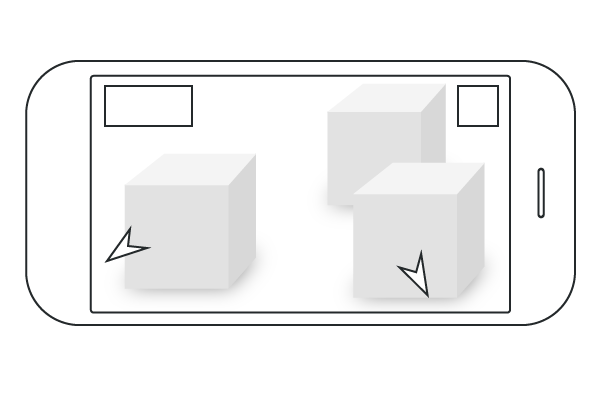Feedback
For a game to feel responsive, every user interaction needs a proportional response. Provide feedback to the user whenever possible so the user can make progress in her task.
As a general rule, when the user is tapping or interacting on the screen, the visual state of the target object should reflect to the user how it is responding to the input.
While we don’t dictate the specific visual feedback, we think it is important to address basic expectations that the user might have for your game.
2D feedback
For 2D elements, this means that touch targets should implement basic visual responses.
- Buttons should have normal and selected states.

- If there are events happening of the viewport, display indicators to let the person know.

3D Feedback
When the user is interacting with the digital layer, the target digital object should implement visual responses.
If the user taps to select an object, differentiate between the object’s states (rest, active, and selected).
- For example, when an object is being tapped, show selection by performing a little bounce animation. When the object is selected the object can be highlighted by a colored outline.
Another example is to clearly indicate manipulation. When the object is being moved around, slightly lift the target object so it feels like it is floating and sliding above the surface.
- Show the positioning of the object using placement mats.
 One of the important feedback to provide is to clearly indicate spaces where the digital layer is active.
One of the important feedback to provide is to clearly indicate spaces where the digital layer is active.
- For example, if the play area is constrained to a specific spot on a surface, clearly delimitate that experience by drawing a boundary around the area.
Another class of important feedback is showing the user when he or she is interacting with. Even if the user’s tap has no effect, it can be important to indicate to the user where the touch is pointing towards. This helps the user create a consistent spatial model of the world, and helps the user by making less mistakes in the future.

While the main type of interaction feedback we discuss in this article is visual in nature, it is often useful to increase the players immersion by adding auditory responses or haptic feedback.
